My Trip to Porto, Portugal: A Journey Between Wine and Harry Potter

During my Europe trip from April to May, I had already prepared a complete itinerary for a 25-day trip. I specifically allocated one week for Denmark, Sweden, and Norway because I had never been there before and was curious about Stockholm and other cities. But when I arrived in France, I started to hesitate about flying to Northern Europe because I felt reluctant to solo travel again. FYI, most of the time I travel alone, including twice to Europe, Japan, and several cities in the U.S. when I lived there. Since I’ve been solo traveling so often, and maybe because of my age, now I prefer traveling with someone. Unfortunately, Adrien had to work, so I had no choice but to head to Scandinavia alone. I kept going back and forth about buying a ticket to Copenhagen, and the cold spring weather made me feel lonely. In the end, I decided to go to a warmer destination—Portugal—to avoid feeling too isolated.
After spending three days in Lisbon, on the fourth day, I took a bus to Porto to catch my flight back to Paris. I made the most of my one day there by exploring Porto. Who would have thought that I’d find Porto way more interesting than Lisbon? The weather was cooler, the city full of historical sites, more aesthetically pleasing, and it matched my expectations of how a European city should look.
Exploring Porto, Portugal: A City of Wine and Harry Potter
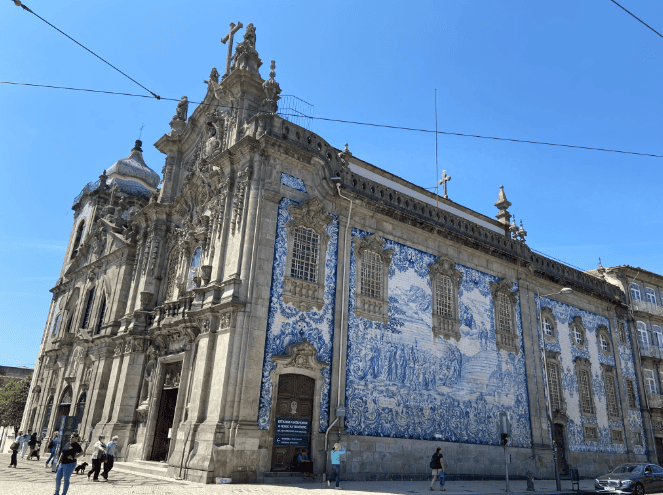
Traveling to Porto made me realize that Porto is much more than just a Harry Potter city. It has a romantic atmosphere with winding cobblestone streets, classical churches and palaces, and buildings adorned with Azulejos—Portugal’s signature blue and white ceramic tiles. Just like my first time in Europe, stepping into Porto felt like I was walking through a time tunnel into the medieval era. It didn’t look modern at all, and that’s exactly what I love about many European cities.
As far as the eye can see, Porto is filled with Gothic, Romanesque, and Baroque-style churches, all decorated with Azulejos. Even the São Bento train station is covered in them. This style has its roots in Porto’s history, as the city was once ruled by the Muslim Moors from North Africa from the early 8th century to the early 11th century, until European Christian forces reclaimed it. The Azulejos, a Moorish legacy, have remained an integral part of Portuguese culture and art.
Porto played a significant role in shaping modern Portugal. The city was at the heart of the liberal revolutions that demanded the end of absolute monarchy, which eventually led to the creation of the Portuguese Republic in 1910. Today, Porto is known worldwide for its wine production and export. Its location at the mouth of the Douro River has earned it the nickname “the city of bridges,” as there are six bridges in Porto.
When I visited Porto, I felt that the city was a complete package. It has a romantic and classic atmosphere, is full of well-preserved historical sites, offers stunning views of the Douro River, has friendly locals, and exudes a lively energy. It’s no surprise that tourism is booming here. Porto’s affordability has also attracted many expats to retire in the city.
Getting to Porto, Portugal

I took a FlixBus from Lisbon’s Oriente bus terminal to Porto, which took about 3 hours and 15 minutes and cost 12 Euros. You can also fly or take a train to Porto. Although my visit to Porto was brief, as my main goal was to catch a flight to Paris, I was pleasantly surprised by its beauty—I fell in love with the city as soon as I got off the bus.
What to See and Do in Porto, Portugal
1. Dom Luis I Bridge
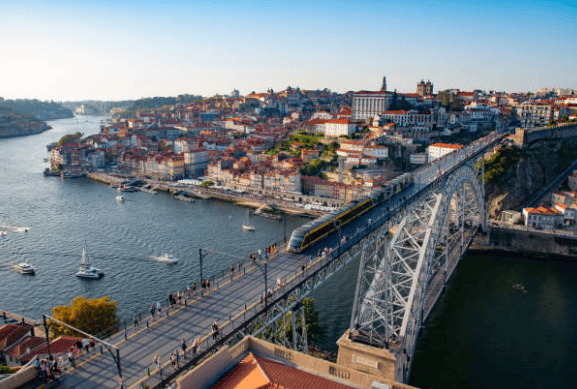
This double-decker bridge is an iconic landmark of Porto. It spans the Douro River and connects the Ribeira district with the port wine houses in Vila Nova de Gaia. The upper deck is reserved for metro trains and pedestrians, while the lower deck is for vehicles and walkers. Designed by Téophile Seyrig, a student of Gustave Eiffel, the bridge offers breathtaking views of the city from its 60-meter height.
2. Ribeira District
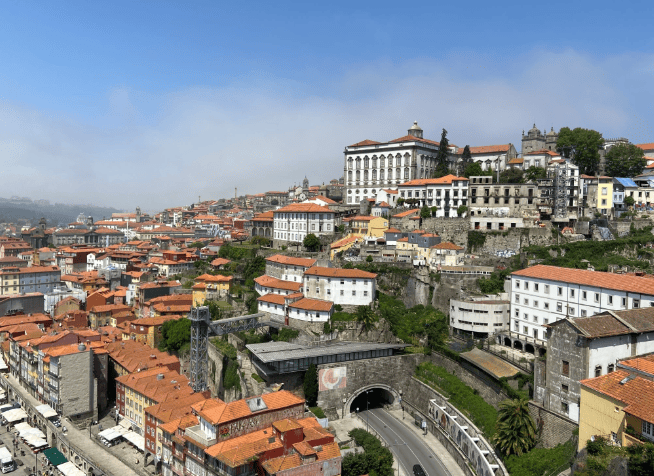
Located along the Douro River, Ribeira is the most beautiful, authentic, and lively district in Porto. It’s a must-visit for its colorful houses, charming streets, and vibrant restaurants where you can enjoy Portuguese cuisine while gazing at the river.
3. Clérigos Church
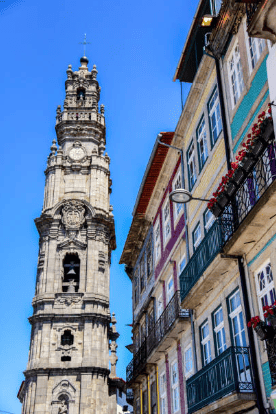
This 75.6-meter Baroque church offers stunning views of Porto from its tower, completed in 1763. You’ll need to climb 240 steps to reach the top, but the view is worth the effort.
4. Livraria Lello
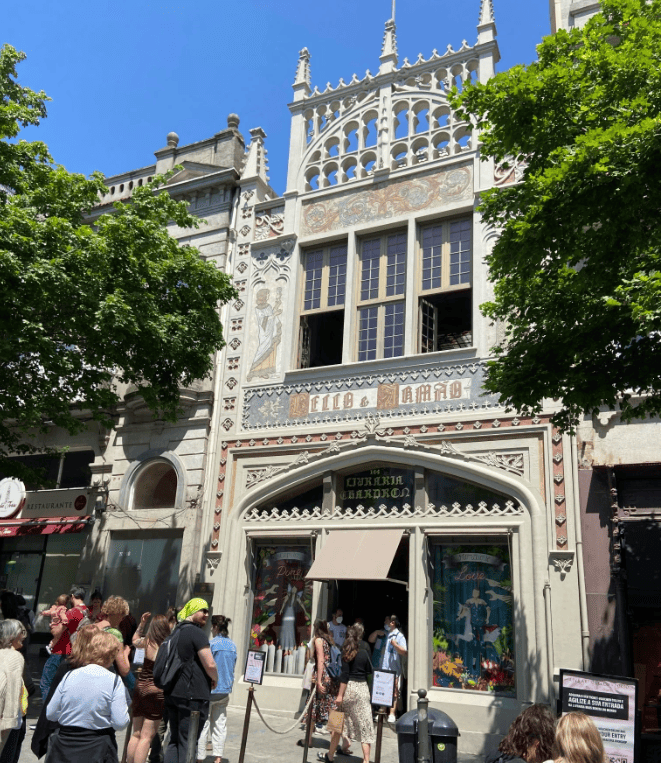
One of the most beautiful bookstores in the world, Livraria Lello is famous for inspiring J.K. Rowling’s vision of Harry Potter. The bookstore’s stunning Art Nouveau architecture is reminiscent of Flourish and Blotts from Diagon Alley. Despite the long lines, it’s a must-see attraction in Porto.
5. Porto Cathedral

This 12th-century Romanesque and Baroque cathedral is another must-see. The Igreja do Carmo, with its stunning Azulejos-adorned façade, is my favorite church in Porto.
Final Thoughts
Although my trip to Porto was unplanned and short, I was deeply impressed by its beauty. I didn’t have time to visit all the places I wanted, like the wine cellars in Vila Nova de Gaia or the famous São Bento train station. But even with just one day, Porto left a lasting impression, and I would love to return—next time, not alone!
